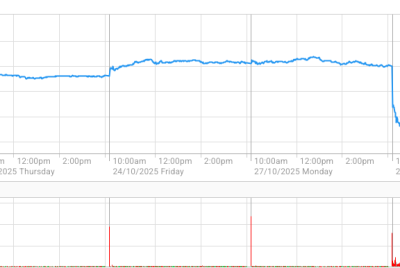Accrue Real Estate: Creating a Diversified Real Estate Portfolio

Real estate diversification plays a pivotal role in building a resilient investment portfolio. By allocating capital across various property types, geographic regions, and investment strategies, investors can minimize exposure to market volatility while maximizing opportunities for long-term growth. As noted by Accrue Real Estate, this not only balances risk but also enhances income stability, offering protection during downturns when certain sectors or locations might underperform.
When investors become more experienced, refining the asset mix and expanding into new markets ensures sustained performance and flexibility. Ultimately, effective diversification empowers investors to weather market shifts and build enduring wealth through real estate.
Real Estate Diversification
Real estate diversification means spreading investments across different property types, locations, and strategies to reduce risk and improve long-term stability. Instead of relying on a single asset or market, investors create a mix that allows their portfolio to perform under various conditions.
Many investors turn to diversification as a way to protect against local market downturns. A portfolio that includes residential and commercial properties in different cities may be less affected by economic shifts in one area. This helps maintain cash flow and asset value over time. In some cases, an investor with holdings in tourist-heavy regions may avoid losses during off-seasons by balancing with assets in stable suburban areas.
Some believe owning multiple properties in one city is enough to be considered diversified, but that's often not the case. True diversification involves varying property classes, locations, and income structures to provide more consistent performance. Without this balance, investors risk being overly exposed to one market's economic cycle.
Advantages of a Diversified Portfolio
A diversified real estate portfolio offers better protection against market fluctuations. When one sector underperforms, others may remain stable or even thrive. This balance helps smooth out returns and reduces the chance of significant losses during downturns. During periods of economic uncertainty, this kind of resilience becomes especially valuable.
Investors also benefit from a mix of income-generating assets and growth-oriented properties. A multi-family rental might provide steady monthly cash flow, while a commercial development could appreciate greatly over time.
A well-diversified portfolio opens doors to different tenant types, from families and students to businesses and retailers. Each tenant group has unique lease structures and risk factors, which can contribute to a more stable income stream overall. This tenant variety also helps reduce the impact of vacancies or turnover in any single asset.
Asset Types to Consider
Residential properties such as single-family homes and multi-unit buildings are often the starting point for many investors. These assets tend to be easier to manage and finance, especially in familiar neighborhoods, making them appealing for those new to real estate. They also provide consistent demand, particularly in growing metropolitan areas.
Commercial spaces like office buildings, industrial warehouses, and retail centers can offer higher returns but usually require more capital and expertise. They often come with longer lease terms, which can lead to more predictable income, although they may be more sensitive to economic cycles. Investors who take the time to study tenant quality and lease structures often find rewarding opportunities in this class.
In addition to physical properties, some investors explore Real Estate Investment Trusts (REITs) or land holdings. These alternatives can introduce exposure to markets or asset classes that are otherwise difficult to access directly, helping round out a portfolio with less hands-on involvement. This can be beneficial for those looking to diversify without the responsibilities of property management.
Geographic and Market Spread
Spreading investments across various regions can shield a portfolio from localized economic shifts. A downturn in one city's housing market doesn't necessarily impact properties held in another state or country. This broader reach can help maintain income and property values more consistently, even during regional recessions or policy changes.
Different regions also come with unique tax structures, regulatory environments, and demographic trends. An investor might find that a suburban market offers better rental yields, while an urban center provides stronger appreciation potential. Tapping into these dynamics can add meaningful value over time. Being aware of local employment trends and infrastructure developments can further guide smart regional diversification.
While some prefer to stay within domestic borders, others integrate international assets to access emerging opportunities. Investing abroad comes with added complexities, but it can also offer exposure to fast-growing economies and favorable currency swings. It also encourages a broader understanding of global real estate trends and risk management strategies.
Choosing Between Active and Passive
Real estate investors often weigh the effort and control of direct ownership against the convenience of passive models. Managing a property personally allows for hands-on decision-making, but it also demands time and ongoing involvement. Some find this rewarding, while others view it as overwhelming. Direct ownership also allows for quick adaptations to tenant needs or market shifts.
Passive strategies like REITs or real estate crowdfunding platforms can offer exposure to large-scale assets with minimal effort. These options suit those who want real estate returns without the operational responsibilities. Many investors find success by combining both, creating a hybrid approach that balances control with efficiency.
Building and Evaluating Your Portfolio
Composing a strong portfolio starts with understanding your financial goals and tolerance for risk. Some may prioritize monthly cash flow, while others focus on long-term appreciation or tax benefits. Matching the right asset mix to these goals is key to successful investing. It's also important to revisit these goals annually as circumstances evolve.
Ongoing evaluation ensures that your portfolio continues to align with market conditions and personal milestones. Metrics like cash-on-cash return, occupancy rates, and equity growth guide decision-making. When a property underperforms or a market shifts, rebalancing helps keep the strategy on track. Regular assessments can also uncover hidden opportunities or underutilized assets worth repositioning.
© Copyright 2025 IBTimes AU. All rights reserved.





















